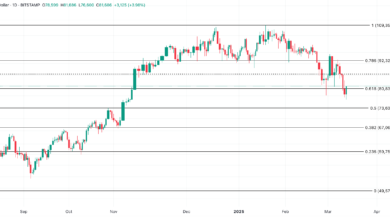
Bitcoin Halving Impact on Future Price Complete 2025 Analysis & Predictions
The cryptocurrency world eagerly anticipates each Bitcoin halving event, as these programmed supply reductions have historically triggered massive price movements. Understanding the Bitcoin halving impact on future price is crucial for investors, traders, and anyone interested in Bitcoin’s long-term trajectory. This comprehensive analysis examines how halving events shape Bitcoin’s price dynamics, what historical data reveals about future trends, and why these quadrennial events remain one of the most significant catalysts in cryptocurrency markets.
Bitcoin’s halving mechanism, built into its core protocol, reduces the block reward for miners by 50% approximately every four years. This deflationary feature creates scarcity, potentially driving up demand and prices. As we analyze the Bitcoin halving impact on future price, we’ll explore historical patterns, market psychology, and expert predictions to provide you with actionable insights for navigating Bitcoin’s volatile yet potentially lucrative landscape.
Understanding Bitcoin Halving: The Foundation of Price Impact
Bitcoin halving represents a fundamental shift in the cryptocurrency’s monetary policy. Every 210,000 blocks, roughly every four years, the reward that miners receive for validating transactions gets cut in half. This mechanism was designed by Satoshi Nakamoto to control inflation and create digital scarcity, mimicking precious metals like gold.
The process is entirely algorithmic and predictable, yet its market effects continue to surprise investors. When examining the Bitcoin halving impact on future price, it’s essential to understand that halvings don’t just reduce supply – they fundamentally alter market dynamics, investor psychology, and institutional interest.
The most recent halving occurred in April 2020, reducing the block reward from 12.5 to 6.25 bitcoins. The next halving is expected around 2024, when rewards will drop to 3.125 bitcoins per block. This predictable scarcity creates what economists call a “supply shock,” where demand remains constant or increases while supply growth dramatically slows.
The Mathematics Behind Halving Events
Bitcoin’s total supply is capped at 21 million coins, with approximately 19.5 million already in circulation. Each halving event reduces the rate at which new bitcoins enter the market, creating mathematical certainty around future scarcity. This programmed deflation stands in stark contrast to traditional fiat currencies, where central banks can print money at will.
The supply reduction following each halving is significant. Before the 2020 halving, approximately 900 new bitcoins entered circulation daily. After the event, this number dropped to 450, representing a 50% reduction in new supply. This supply constraint, combined with growing institutional adoption, creates powerful upward pressure on prices.
Historical Analysis: How Past Halvings Influenced Bitcoin Prices

Examining historical data provides crucial insights into the Bitcoin halving impact on future prices. Bitcoin has experienced three halvings so far: in 2012, 2016, and 2020. Each event followed remarkably similar patterns, though with increasing complexity as Bitcoin’s market matured.
The 2012 Halving Bitcoin’s First Major Price Surge
The first halving in November 2012 saw Bitcoin’s price rise from around $12 to over $200 within a year, representing a gain of more than 1,500%. This dramatic increase established the template for future halving cycles and demonstrated the power of programmed scarcity in driving cryptocurrency valuations.
The 2012 halving occurred when Bitcoin was still largely unknown to mainstream investors. Mining operations were smaller, market liquidity was limited, and the ecosystem was primarily driven by early adopters and technology enthusiasts. Despite these limitations, the supply reduction created sufficient market pressure to drive significant price appreciation.
The 2016 Halving Institutional Interest Emerges
Bitcoin’s second halving in July 2016 coincided with growing institutional awareness and improved market infrastructure. The price increased from approximately $650 before the halving to nearly $20,000 by December 2017, marking Bitcoin’s first major mainstream bull run.
This cycle demonstrated how the Bitcoin halving’s impact on future price extends beyond simple supply and demand mechanics. Media attention, regulatory developments, and institutional adoption all contributed to price movements, creating a more complex but ultimately more powerful price dynamic.
The 2020 Halving Corporate Adoption and Institutional Investment
The most recent halving in April 2020 occurred during unprecedented global monetary expansion due to COVID-19 pandemic responses. Bitcoin’s price rose from around $8,000 before the halving to an all-time high of nearly $69,000 in November 2021.
This cycle marked a turning point in Bitcoin adoption, with major corporations like Tesla, MicroStrategy, and Square adding Bitcoin to their balance sheets. The combination of halving-induced scarcity and institutional demand created the most significant price appreciation in Bitcoin’s history.
Market Psychology and Investor Behavior During Halving Cycles
Understanding market psychology is crucial when analyzing the Bitcoin halving impact on future prices. Halving events create predictable psychological responses among different investor groups, from retail traders to institutional investors.
Pre-Halving Anticipation and Speculation
In the months leading up to each halving, markets typically experience increased volatility and speculative activity. Investors attempt to position themselves advantageously, often driving prices higher in anticipation of post-halving appreciation. This pre-halving rally has become increasingly pronounced as awareness of halving effects has grown.
The anticipation phase is characterized by increased media coverage, social media discussions, and educational content about halving mechanics. Experienced investors often begin accumulating positions 12-18 months before expected halving dates, contributing to gradual price appreciation.
Post-Halving Market Dynamics
Immediately following halving events, markets often experience temporary corrections or consolidation periods. This phenomenon, sometimes called the “halving hangover,” occurs as speculative positions are unwound and markets digest the new supply dynamics.
However, the fundamental supply reduction typically reasserts itself within 6-18 months post-halving, leading to sustained price appreciation. This delayed reaction reflects the time needed for reduced supply to impact market equilibrium meaningfully.
Technical Analysis, Mining Economics, and Network Security
The Bitcoin halving impact on future price extends beyond simple supply and demand to include complex interactions with mining economics and network security. Understanding these technical factors provides deeper insights into price dynamics.
Mining Profitability and Hash Rate Effects
Halving events immediately reduce mining profitability by 50%, assuming constant electricity costs and Bitcoin prices. Less efficient miners may cease operations, potentially reducing network hash rate and security temporarily. However, rising prices typically compensate for reduced block rewards, maintaining network security over time.
The relationship between mining economics and price creates a feedback loop. Higher prices attract more miners, increasing network security and legitimacy. This enhanced security, in turn, increases institutional confidence and adoption, further supporting price appreciation.
Network Difficulty Adjustments
Bitcoin’s difficulty adjustment mechanism ensures consistent block times despite changes in mining activity. Following halvings, difficulty may decrease if miners leave the network, making mining more profitable for remaining participants. This self-regulating mechanism helps maintain network stability during transition periods.
Macroeconomic Factors Influencing Future Halving Cycles
Modern Bitcoin halvings occur within increasingly complex macroeconomic environments. Understanding these broader factors is essential for accurately predicting the Bitcoin halving impact on future prices in future cycles.
Monetary Policy and Inflation Concerns
Central bank policies significantly influence Bitcoin adoption and pricing. Expansionary monetary policies, such as quantitative easing and low interest rates, often drive investors toward alternative stores of value like Bitcoin. Future halving cycles may coincide with varying monetary policy environments, affecting their price impact.
The growing recognition of Bitcoin as “digital gold” means institutional investors increasingly view it as an inflation hedge. This perception strengthens the relationship between halving-induced scarcity and price appreciation, particularly during periods of monetary expansion.
Regulatory Development and Institutional Adoption
Regulatory clarity and institutional infrastructure continue evolving, creating more sophisticated markets around each halving cycle. Future halvings will likely occur within frameworks of established ETFs, regulated exchanges, and clear legal guidelines, potentially amplifying or moderating price effects.
Institutional adoption adds stability but may also reduce volatility. As larger, more sophisticated investors enter Bitcoin markets, price movements may become more measured, though the fundamental scarcity created by halvings remains powerful.
Predicting Future Price Movements: Models and Methodologies
Several analytical frameworks attempt to quantify the Bitcoin halving impact on future prices. While no model perfectly predicts future performance, understanding these approaches provides valuable insights into potential price trajectories.
Stock-to-Flow Models
The Stock-to-Flow (S2F) model, popularized by analyst PlanB, attempts to predict Bitcoin prices based on the relationship between existing supply (stock) and new production (flow). Halving events dramatically increase Bitcoin’s stock-to-flow ratio, theoretically supporting higher prices.
While the S2F model has shown remarkable accuracy through past cycles, critics argue it may not account for changing market dynamics, regulatory developments, or competing cryptocurrencies. Nevertheless, it remains one of the most referenced frameworks for understanding halving price impacts.
Network Value Models
Network value models attempt to relate Bitcoin’s price to network usage metrics, such as active addresses, transaction volume, and hash rate. These models suggest that halving effects compound with network growth, creating exponential rather than linear price appreciation.
The challenge with network value models lies in separating speculation from genuine utility. As Bitcoin markets mature, distinguishing between productive network usage and speculative activity becomes increasingly important for accurate price predictions.
Institutional Perspectives on Halving Cycles
Institutional investment has fundamentally changed how markets perceive and react to Bitcoin halvings. Understanding institutional perspectives provides insights into future price dynamics and market evolution.
Corporate Treasury Adoption
Companies holding Bitcoin as treasury assets view halvings differently from individual investors. Corporate treasurers focus on long-term value preservation and purchasing power maintenance, making them less sensitive to short-term volatility but more interested in fundamental scarcity arguments.
The growing trend of corporate Bitcoin adoption suggests future halving cycles may be characterized by more stable, sustained price appreciation rather than dramatic boom-bust patterns. Corporate investors typically have longer investment horizons and greater risk tolerance for volatility.
Investment Fund Strategies
Cryptocurrency hedge funds and investment vehicles have developed sophisticated strategies around halving cycles. These strategies often involve pre-positioning in anticipation of halving effects, creating self-reinforcing price dynamics.
As the cryptocurrency investment industry matures, fund strategies may become more nuanced, potentially smoothing extreme price movements while still capitalizing on fundamental supply constraints created by halvings.
Risk Factors and Potential Challenges

While historical patterns suggest positive price impacts from halving events, several risk factors could alter future outcomes. Understanding these risks is crucial for a comprehensive analysis of the Bitcoin halving impact on future prices.
Market Maturation and Diminishing Returns
As Bitcoin markets mature and institutional participation increases, the relative impact of halving events may diminish. Larger market capitalizations require proportionally larger capital inflows to achieve similar percentage gains, potentially moderating future price appreciation.
The law of large numbers suggests that as Bitcoin’s market value grows, percentage gains from halving events may decrease over time. However, the absolute dollar impact may remain significant due to Bitcoin’s growing market capitalization.
Competitive Landscape and Alternative Cryptocurrencies
The cryptocurrency landscape has evolved significantly since early halving cycles. Alternative cryptocurrencies, central bank digital currencies (CBDCs), and other blockchain-based assets may compete for investor attention and capital, potentially reducing Bitcoin’s dominance.
However, Bitcoin’s first-mover advantage, network effects, and established position as “digital gold” provide significant competitive moats. The unique combination of programmed scarcity, decentralization, and security continues to differentiate Bitcoin from alternatives.
Regulatory and Political Risks
Regulatory developments could significantly impact how halving cycles affect prices. Potential regulatory restrictions, taxation changes, or geopolitical events could override fundamental supply and demand dynamics created by halvings.
Conversely, positive regulatory developments, such as favorable tax treatment or official recognition as legal tender, could amplify halving effects by increasing institutional comfort and adoption rates.
Investment Strategies for Halving Cycles
Understanding the Bitcoin halving impact on future price enables the development of strategic investment approaches. Several proven strategies have emerged from analysis of past halving cycles.
Dollar-Cost Averaging Around Halving Events
Dollar-cost averaging (DCA) remains one of the most effective strategies for capitalizing on halving cycles while managing volatility. Beginning DCA programs 18-24 months before expected halvings allows investors to build positions gradually while benefiting from price appreciation.
This approach reduces timing risk while ensuring participation in halving-driven price movements. The strategy works particularly well for individual investors who cannot dedicate significant time to active trading but want exposure to Bitcoin’s long-term appreciation potential.
Pre-Halving Accumulation Strategies
More active investors often employ accumulation strategies beginning 12-18 months before expected halving dates. These strategies involve gradually building Bitcoin positions during periods of relative price stability, then holding through halving-driven appreciation cycles.
Successful accumulation requires patience and discipline, as markets may experience significant volatility during pre-halving periods. However, historical data suggests this approach has been highly effective across multiple halving cycles.
Global Economic Integration and Bitcoin’s Role
Bitcoin’s evolving role in the global financial system affects how halving events impact prices. As Bitcoin becomes more integrated into traditional financial markets, halving effects may interact with broader economic cycles.
Correlation with Traditional Assets
Early Bitcoin halvings occurred when Bitcoin was largely uncorrelated with traditional financial assets. However, growing institutional adoption has increased correlations with stocks, bonds, and commodities, particularly during periods of market stress.
Future halving cycles may occur within contexts of varying correlations with traditional assets. During periods of high correlation, macroeconomic factors may moderate or amplify halving effects depending on broader market conditions.
Central Bank Digital Currencies and Competition
The development of CBDCs represents a potential competitive threat to Bitcoin, though the fundamental differences in monetary policy and decentralization suggest limited direct competition. CBDCs may increase awareness of digital currencies, potentially benefiting Bitcoin adoption.
The key distinction lies in monetary policy: CBDCs maintain government control over the money supply, while Bitcoin’s halving mechanism creates programmed scarcity independent of political influence. This difference may become more valuable as monetary debasement concerns grow globally.
Also Read: Bitcoin Futures Market Key Levels, Benefits, Risks, and Trends
Future Outlook: The Next Halving and Beyond
Looking ahead, the Bitcoin halving impact on future price will likely continue following historical patterns while evolving with changing market conditions. The next halving, expected around 2024, will occur in a significantly different environment than previous events.
Technological Developments
Technological improvements in Bitcoin’s ecosystem, including Lightning Network adoption, Taproot implementation, and layer-two solutions, may enhance Bitcoin’s utility and attractiveness around future halving cycles. These developments could amplify halving effects by increasing fundamental demand.
Institutional Infrastructure Maturation
The continued development of institutional infrastructure, including custody solutions, ETFs, and regulatory frameworks, creates more accessible pathways for institutional Bitcoin investment. This infrastructure may lead to more sustained, less volatile price appreciation following future halvings.
Conclusion
The Bitcoin halving impact on future price represents one of the most predictable yet powerful forces in cryptocurrency markets. Historical analysis demonstrates consistent patterns of significant price appreciation following halving events, driven by programmed scarcity and growing institutional recognition of Bitcoin’s store-of-value properties.
As we approach future halving cycles, investors who understand these dynamics and position themselves appropriately stand to benefit from Bitcoin’s unique monetary policy. The combination of algorithmic scarcity, growing institutional adoption, and improving market infrastructure creates compelling conditions for continued halving-driven price appreciation.






